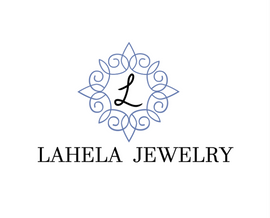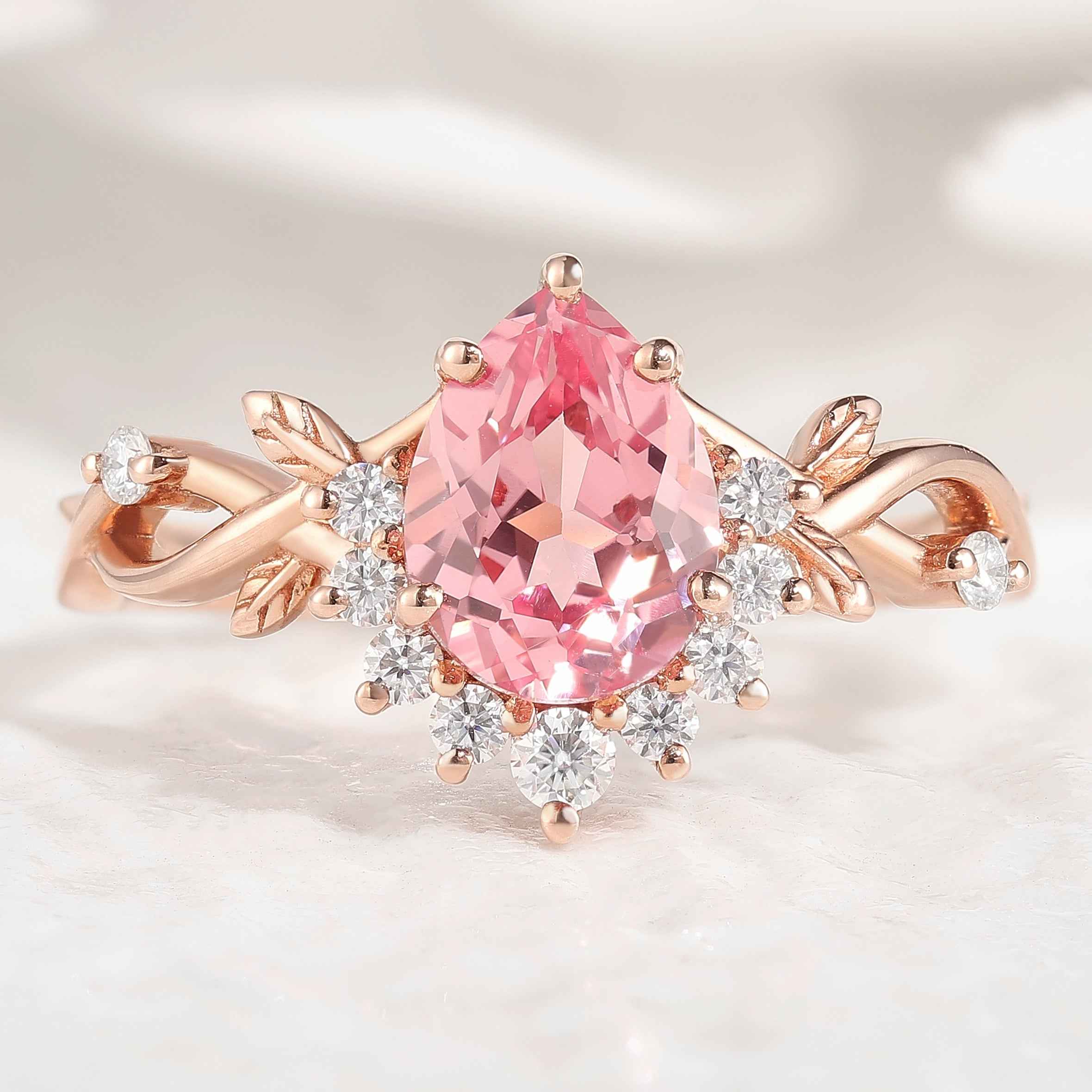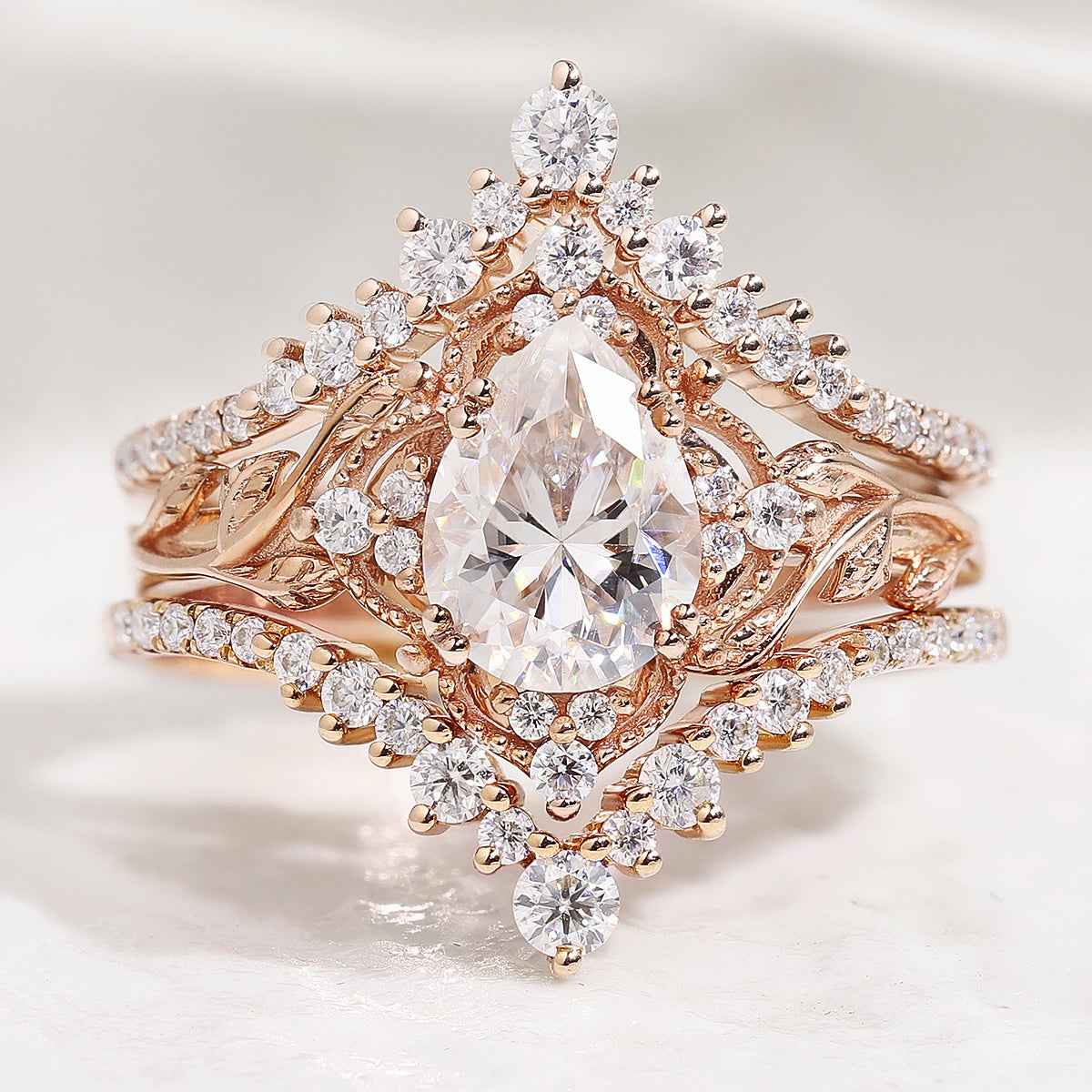Wondering if sapphire is good for an engagement ring? You’re not alone. Colored gemstone rings have become one of the most popular alternatives to diamond, made famous by Princess Diana and Kate Middleton’s iconic blue sapphire, and now chosen by thousands of brides who want something unique, meaningful, and colorful.
But is sapphire actually durable enough for everyday wear? Will it chip or scratch? Is lab-created sapphire “real”? And how does it really compare to diamond? This honest guide covers everything you need to know to decide if a sapphire engagement ring is right for you.
Why Brides Are Choosing Sapphire Engagement Rings
- Completely unique — no two natural sapphires have identical color or pattern
- Rich royal history and timeless elegance
- Stands out beautifully against any skin tone
- Symbolizes loyalty, wisdom, sincerity, and calmness
- Perfect for vintage, Art Deco, or modern colorful designs
- Growing trend away from the “it has to be diamond” tradition
Sapphire vs Diamond: Side-by-Side Comparison
| Feature | Sapphire | Diamond |
|---|---|---|
| Hardness (Mohs scale) | 9 (second hardest gem) | 10 (hardest) |
| Everyday Durability | Very good, but corners can chip | Virtually indestructible |
| Sparkle & Fire | Deep rich color with subtle sparkle | Intense fire and maximum brilliance |
| Color Options | Royal blue, pink, teal, Padparadscha, etc. | Colorless or fancy colored |
| Rarity (top quality) | Fine unheated sapphires are rarer than top diamonds | High-quality colorless common |
| Resale Value | Generally lower | Generally higher |
Pros of Choosing a Sapphire Engagement Ring
- Gorgeous, vivid color that never goes out of style
- Feels personal and one-of-a-kind
- Deep symbolic meaning (September birthstone, 5th & 45th anniversaries)
- Looks spectacular in rose gold, yellow gold, or platinum
- Lab-created sapphires are chemically identical to natural ones
- Often allows for a larger center stone in the same budget
Cons & Real Risks to Consider
- Hardness 9 instead of 10 → edges and corners can chip if hit hard
- Most natural sapphires are heat-treated (permanent and accepted, but must be disclosed)
- Less “fiery” sparkle than diamond — some people prefer maximum brilliance
- Harder to resize or reset later due to the stone’s toughness and inclusions
- Insurance companies sometimes treat colored stones differently
Is Sapphire Durable Enough for Daily Wear?
Yes — for the vast majority of people. Sapphire is one of the toughest gemstones available and is worn every day by thousands of women (including the Princess of Wales since 2010 with no reported damage).
Ideal for:
- Office workers, teachers, remote workers
- Anyone who is mindful about removing rings for heavy tasks
More caution needed if you:
- Work with your hands a lot (nursing, cooking, gardening, fitness training)
- Frequently knock your hands against hard surfaces
Jeweler recommendation: Choose protective settings like bezel, halo, or strong prongs, and go for oval, cushion, or radiant cuts — they hide inclusions better and reduce chip risk.
Famous Sapphire Engagement Rings
- Princess Diana → Kate Middleton: 12ct oval Ceylon sapphire surrounded by diamonds
- Victoria Beckham: Oval sapphire with diamond side stones (one of her many rings)
- Elizabeth Hurley: Emerald-cut sapphire with trillion diamonds
- Mary-Kate Olsen: Large vintage-style sapphire ring
Best Sapphire Colors & Cuts for Engagement Rings
Most popular colors:
- Royal blue (deep velvet)
- Cornflower blue (soft lavender-blue)
- Teal and Padparadscha (pink-orange)
- Pink and parti (multi-color) sapphires
Best cuts for beauty + durability:
- Oval (elongates the finger, most popular)
- Cushion and radiant (great brilliance, forgiving of inclusions)
- Round (rarest and most brilliant in sapphire) Avoid: Emerald cut (shows inclusions and chips more easily)
Lab-Created vs Natural Sapphire
| Aspect | Lab-Created Sapphire | Natural Sapphire |
|---|---|---|
| Chemical Composition | Identical | Identical |
| Hardness & Durability | Identical | Identical |
| Color & Clarity | Usually cleaner and more vivid | May have natural inclusions |
| Ethical/Environmental | Excellent | Varies by origin |
| Appearance to the Eye | Virtually indistinguishable | Same |
Most jewelers and brides now agree: unless you specifically want rarity or investment potential, lab-created sapphire is an outstanding choice for an engagement ring.
Most Stunning Sapphire Engagement Ring Styles
- Halo design (diamonds surrounding the sapphire — adds extra sparkle)
- Three-stone (sapphire center + diamond side stones)
- Bezel setting (metal rim fully protects the stone — best for active lifestyles)
- East-west oval (horizontal setting — ultra modern)
- Vintage milgrain or Art Deco details
Top Alternatives If Sapphire Isn’t Quite Right
- Moissanite (harder than sapphire, more fire than diamond)
- Diamond with sapphire side stones or accents
- Blue spinel (softer but vivid color)
- Keep the dream alive with a protective setting!
Expert Buying Tips
- Always ask for a reputable lab certificate (GIA, AGS, GRS)
- Confirm treatment disclosure in writing
- View the stone in different lighting conditions
- Choose a jeweler offering lifetime care and resizing
- Consider insuring it right away
Final Verdict: Is Sapphire Good for an Engagement Ring?
Yes — beautifully, confidently yes — if:
- You love rich color and want a ring that feels uniquely “you”
- Your daily life isn’t extremely rough on jewelry
- You’re okay with slightly less fire than diamond
Go for diamond only if maximum hardness and sparkle are non-negotiable.
A sapphire engagement ring isn’t a compromise — it’s a statement. If your heart races at the sight of that deep ocean blue (or pink, or teal), then sapphire might just be the perfect choice for your forever ring.
What color or style are you dreaming of? Let me know — happy to help you find the one!




